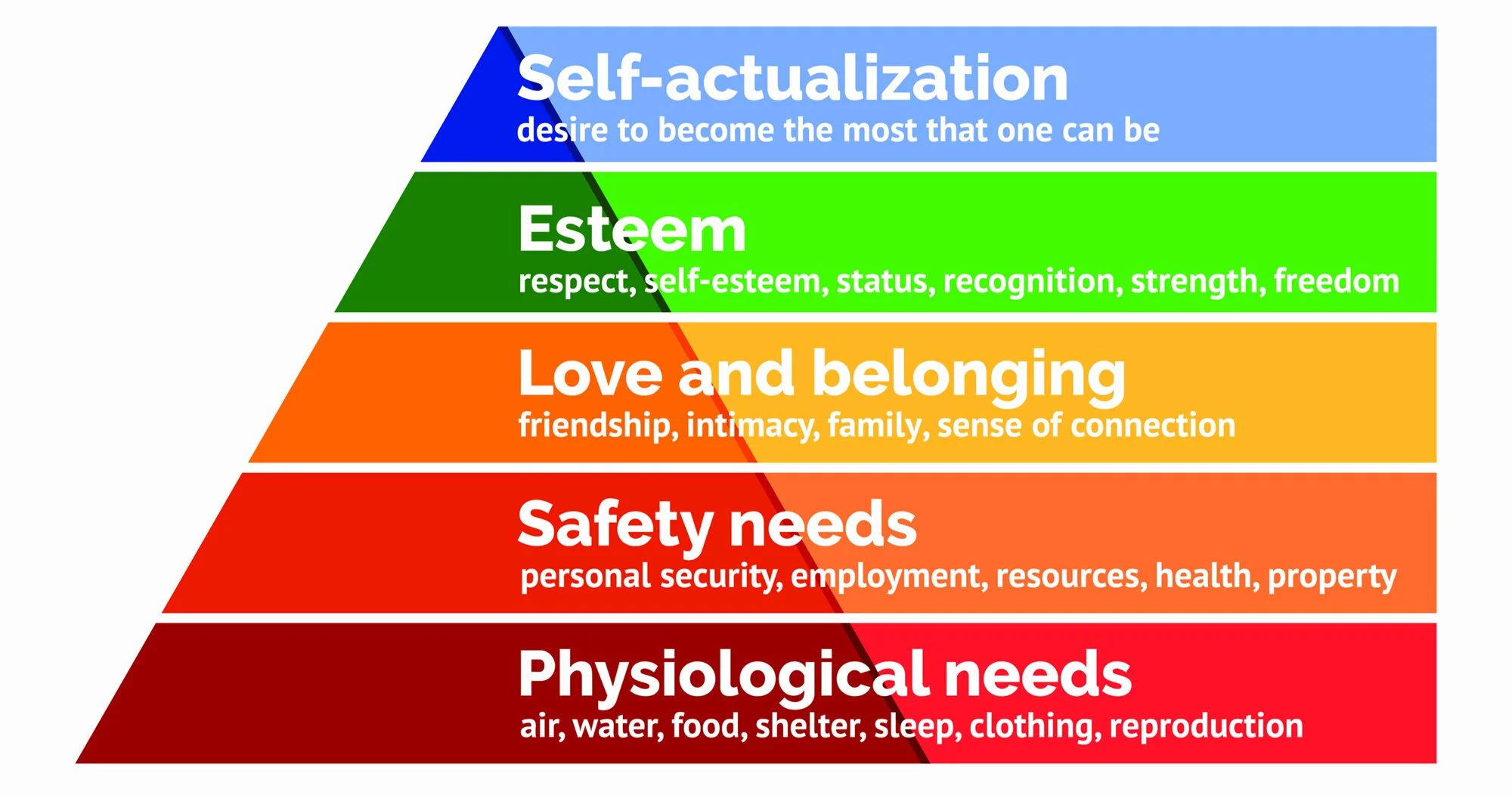The “Basic Needs” of Workplace Culture
I have made a tremendous amount of mistakes as a leader.
I made a really big mistake my first year as an intermediate school principal. I dared to open up a conversation around the purpose of grades at my second staff meeting of the year. Not good. I knew it was not a good move the minute the words left my mouth. Arms crossed, words flew, faces reddened, voices got louder, policy was quoted, history was fiercely protected. Defenses around self-preservation were high and emotional “armor” thickened by the minute.
I did my best to make it out of that meeting without too much cultural damage. I am not sad it happened. It has grown me immensely. It was a defining moment for me in my understanding of workplace culture.
Here’s what I learned:
There are basic needs of “workplace culture” that are imperative to innovation, transformation, and growth as an organization.
We are all familiar with Maslow’s hierarchy of needs. I’d like to use his research to share some of my “ah-has”! In essence Maslow uses a pyramid of human needs to describe a motivational theory in psychology. The pyramid illustrates the hierarchy of human needs starting from the bottom of the pyramid moving up, arguing the needs at the bottom of the pyramid must be met before humans can attend to needs higher up.
Maslow has something to teach us leaders about workplace culture.
Let’s start at the bottom with physiological needs as they relate to workplace culture. Leaders who value culture recognize their employees lead complex lives with personal celebrations and struggles which can affect how they “show up” to work. In education, we are all familiar with the phrase “Kids don’t care how much you know until they know how much you care.” The same is true for adults. Consider this lowest layer of the “culture pyramid” to be all about deeply knowing your employees, but don’t stop there. Culture at this layer is also about the effectiveness of a leader to create conditions for all in the organization to “know” each other deeply. How do you as a leader create opportunities for staff to connect personally and to empathize with the lives of their coworkers outside of work?
Maslow describes the next level up from the bottom as safety needs. When we connect Maslow’s thoughts to that of workplace culture, to me this layer is imperative to organizational innovation and transformation. When employees feel safe and protected to take risks aligned to goals of the organization, innovation occurs. Leaders create this “safety” by encouraging, celebrating, and spotlighting all those stepping out to innovate and transform, even when some of those risks result in failure. Leaders also listen for resource needs required to take these risks. They recognize these “resources” can be physical or material in nature but can also be the resource of influence to take the risk. Leaders who meet the “safety need” recognize the need to give power away to allow for innovation to occur. How do you as a leader spotlight all organizational risk takers?
The need for love and belonging sits third from the top on Maslow’s pyramid. I would argue a sense of belonging and acceptance is critical to employee retention, fulfillment, and innovation. Leaders who value a sense of belonging for their employees pay close attention to feedback and presence. We as humans long to be noticed, loved, nurtured, and known. How are your employees “known” in your organization by you and by others? How do your employees know the greater reach of their contributions and innovations?
The need for esteem might be one of the important when we consider the power of a positive workplace culture that exists long after the leader is gone and withstands high levels of change. A favorite quote of mine is “A system that is dependent upon one person is not sustainable and will crumble.” Weak leaders have a desire to feel needed and tend to create systems that revolve around their strengths and their influence alone. They see others on their team as “assistants to their glory.” Leaders who value the esteem of each one other employees recognize the need for challenge and inspiration. In fact they are so in-tune with the idea that self-esteem increases when challenges are overcome, they are constantly seeking ways to move those they serve out of their comfort zones, ready to support them with insight and encouragement. Confident employees who are unafraid of failure create cultures of great transformation. Confident leaders are willing to nudge, support, and get out of the way. How do you increase the self-esteem of those you serve?
At the top of Maslow’s pyramid is self-actualization. Imagine a workplace culture where every employee is expected, inspired, and determined to become the best they can be for the shared goals of the organization. Leaders who lead self-actualized employees are self-less, visionary, and confident. They are strong advocates for the success of others, take great pride in lifting others up around them, and are not easily threatened by the achievement of others. They recognize a successful leader is defined by the success of those around them. Complacency and protection of the status quo are not tolerated by leaders focused on helping those they serve. How self-actualized are the employees you lead? How do you make it your business to know?
It’s easy for me to see now that talking about repurposing the value of grades, a system rich in personal beliefs and history, without attending to the “basic needs” of cultures that embrace innovation and transformation was destined for disaster.
May we be the kind of leaders that make it our business to meet the “basic needs” of all of those we are blessed to serve.
Interested in talking leadership and culture? I would love to hear from you at laurenambeau@gmail.com

